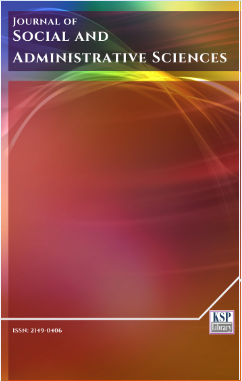Building peace through education: Case of India and Pakistan conflict
Abstract
Abstract. The paper utilises unique conflict data set from literature to capture different aspects of India and Pakistan conflict and analyses the role of education in peace building between the two countries. Education not only directly eases hostilities but it also puts a positive effect on economic growth rates and democratic values in both countries that in return further reduce tensions in dyadic conflict proxies.
Keywords. Education, Conflict transformation, Peace, South Asia.
JEL. A20, H52, H75.Keywords
References
Brauer, J., & Gissy, W.G. (2017). The Economics of Conflict and Peace. Taylor & Francis.
Elliot, G., Rothenberg, T., & Stock, J. (1996). Efficient tests for a autoregressive unit root. Econometrica, 64(4), 813-836. doi. 10.2307/2171846
Hagg, G., & Kagwanja, P. (2007). Identity and peace: Reconfiguring conflict resolution in Africa. African Journal on Conflict Resolution, 7(2), 9-36. doi. 10.4314/ajcr.v7i2.39409
Mamoon, D. (2018). Motivations from Kartarpur Corridor: Importance of secular identity in religious democracies like Pakistan. Journal of Social and Administrative Sciences, 5(4), 282-284.
Mamoon D., & Murhsed, M. (2017). When education explains strong institutions: Trade policy matters. Social Research Indicators, 131(3), 1179-1210. doi. 10.1007/s11205-016-1285-6
Mousseau, M. (2000). Market prosperity, democratic consolidation, and democratic peace. The Journal of Conflict Resolution, 44(4), 472-507. doi. 10.1177/0022002700044004004
Murshed, S.M. & Mamoon, D. (2010). On the costs of not loving thy neighbor as thyself: The trade and military expenditure explanations behind India-Pakistan rivalry. Journal of Peace Research, 47(4), 463-476. doi. 10.1177/0022343310364577
Maringer, E., & Steinweg. R. (1997). Konstruktive Haltungen und Verhaltensweisen in institutionellen Konflikten, Berlin.
Paxton, R.O., & Hessler, J. (2011). Europe in the Twentieth Century’ Cengage Learning, History.
Sims, C. (1980). Macroeconomics and reality. Econometrica, 48(1), 1-48. doi. 10.2307/1912017
Stiglitz, J.E. (1989). Principal and agent. in J. Eatwell, M. Milgate, P. Newman, (Eds.), The New Palgrave: Allocation, Information, and Markets, New York: Norton.
Tomka, B. (2013). A Social History of Twentieth- Century Europe. Routledge.DOI: http://dx.doi.org/10.1453/jsas.v6i4.1969
Refbacks
- There are currently no refbacks.
....................................................................................................................................................................................................................................................................................................................................... Journal of Social and Administrative Sciences - J. Adm. Soc. Sci. - JSAS - www.kspjournals.org
ISSN: 2149-0406
Editor: editor-jsas@kspjournals.org Secretarial: secretarial@kspjournals.org Istanbul - Turkey.
Copyright © KSP Library




